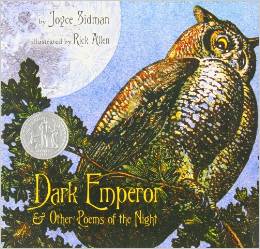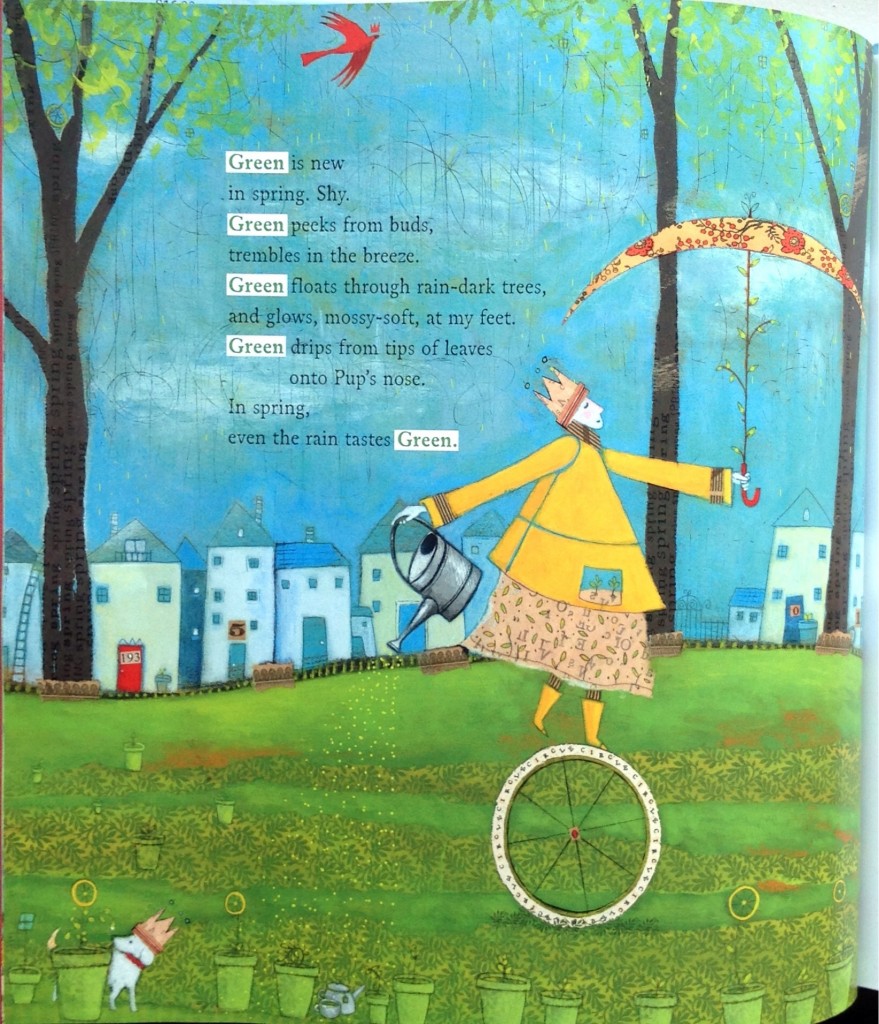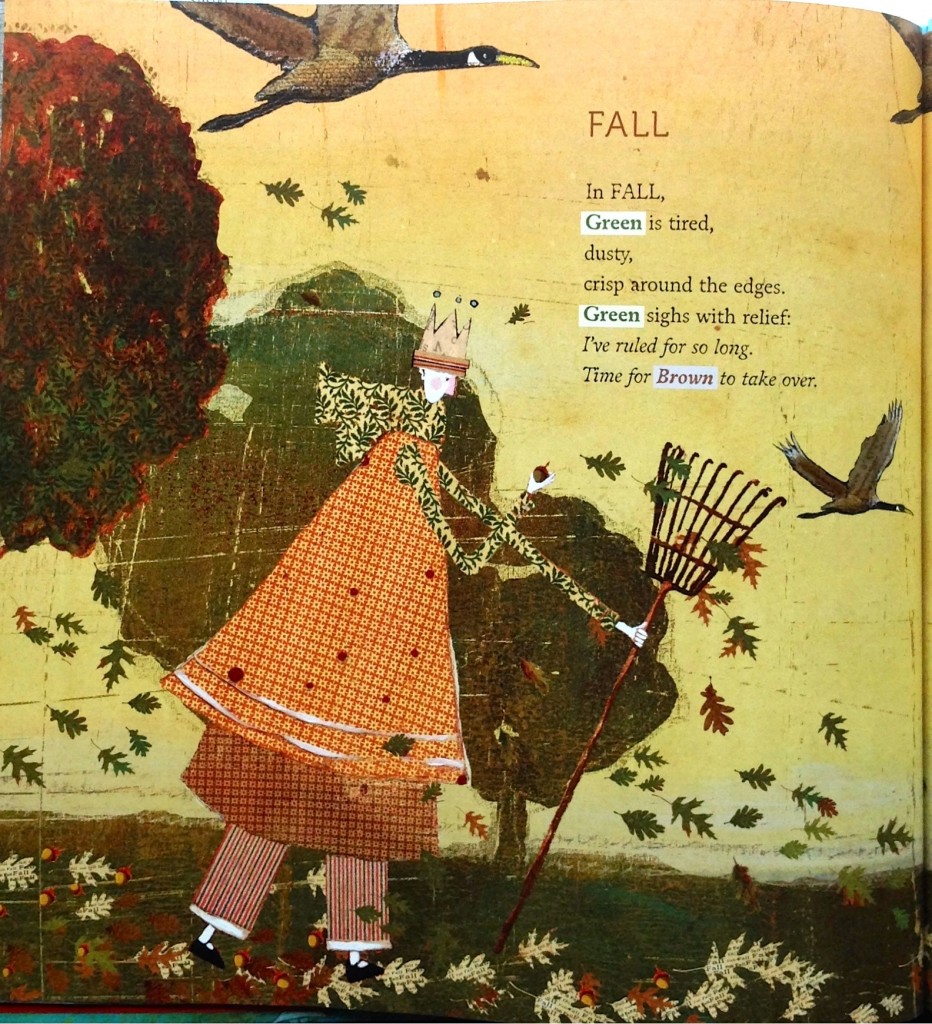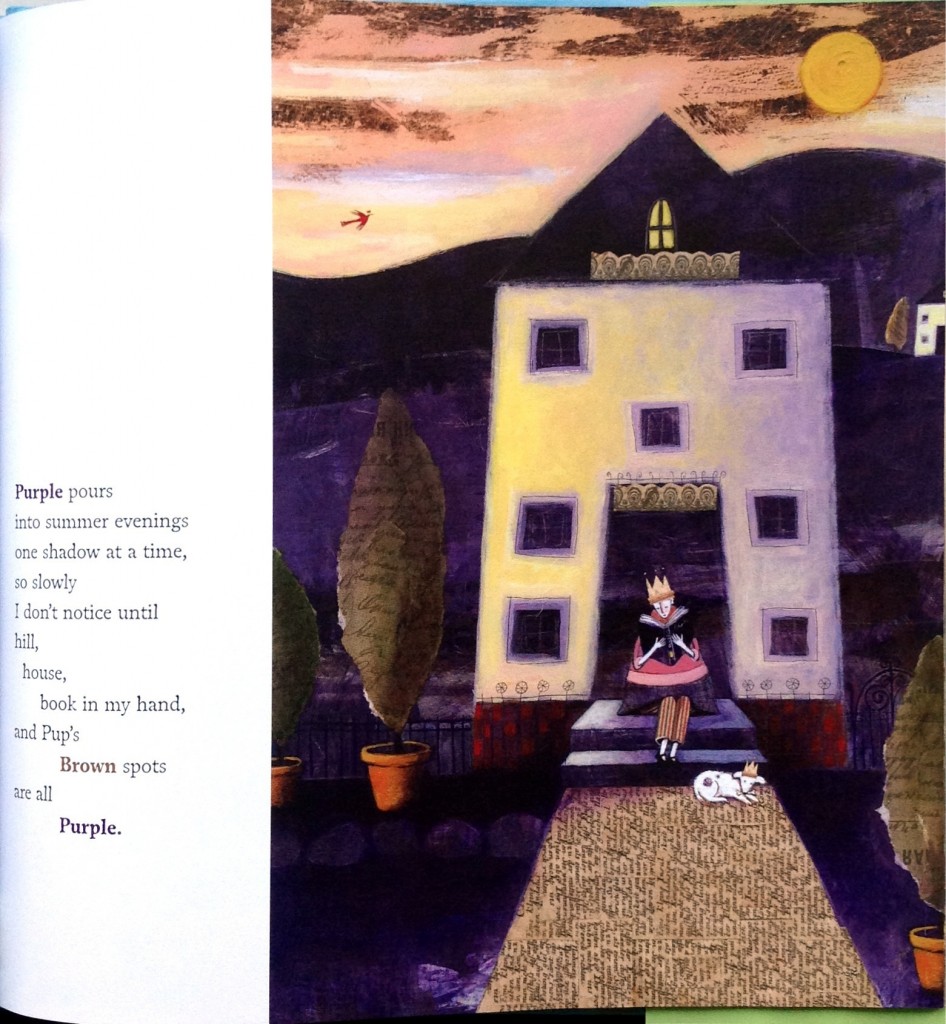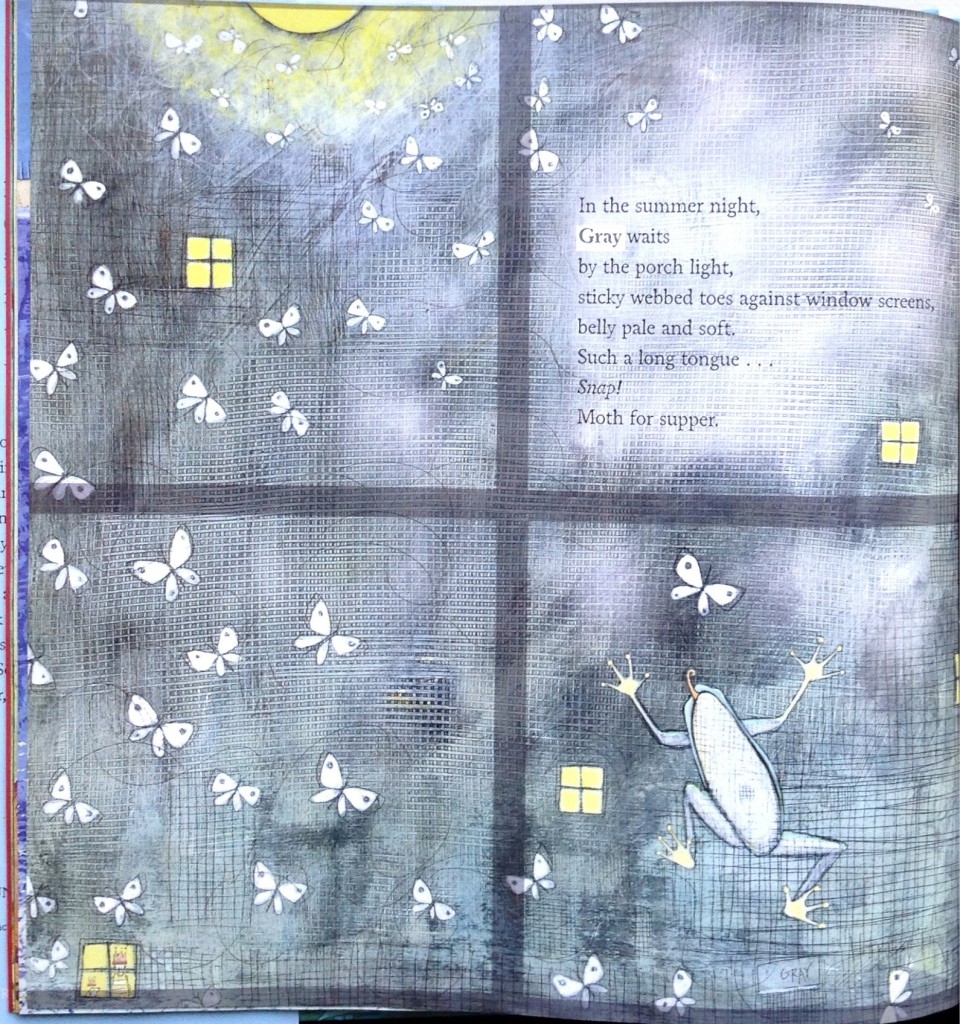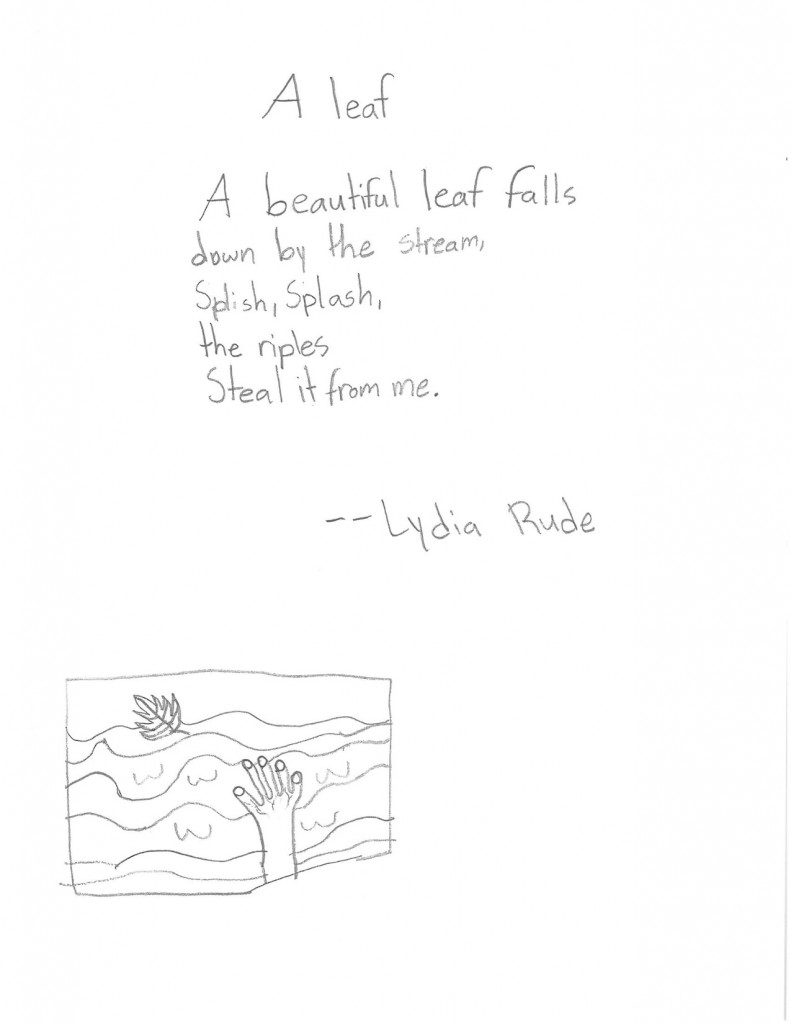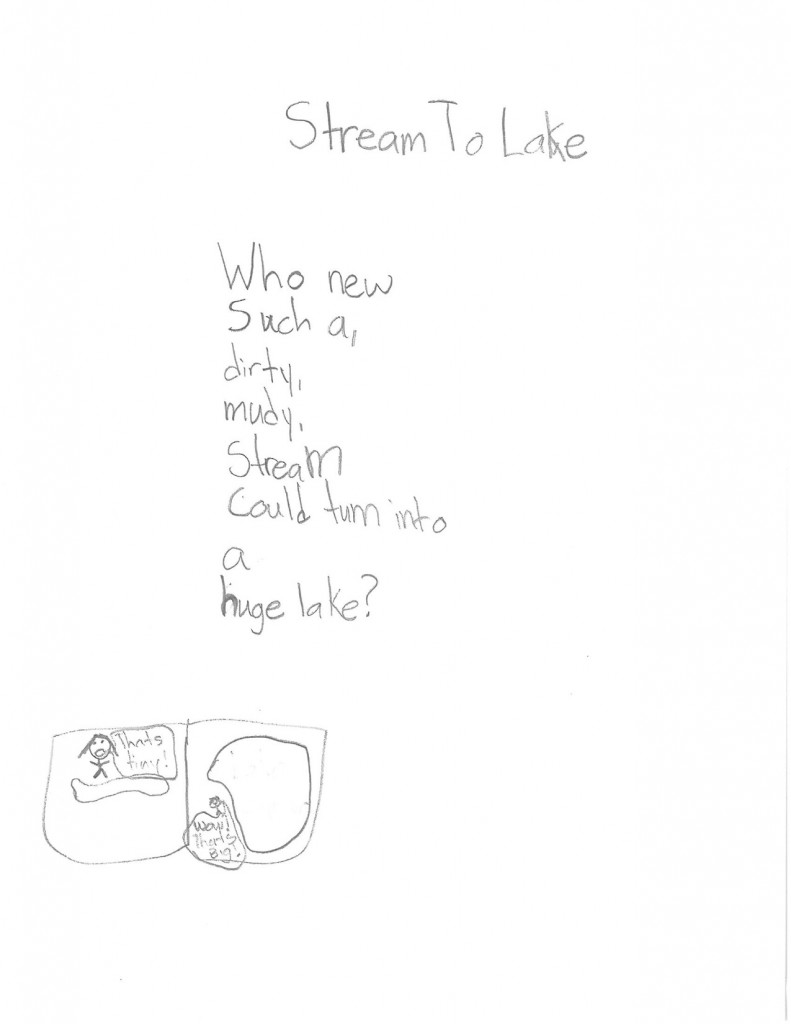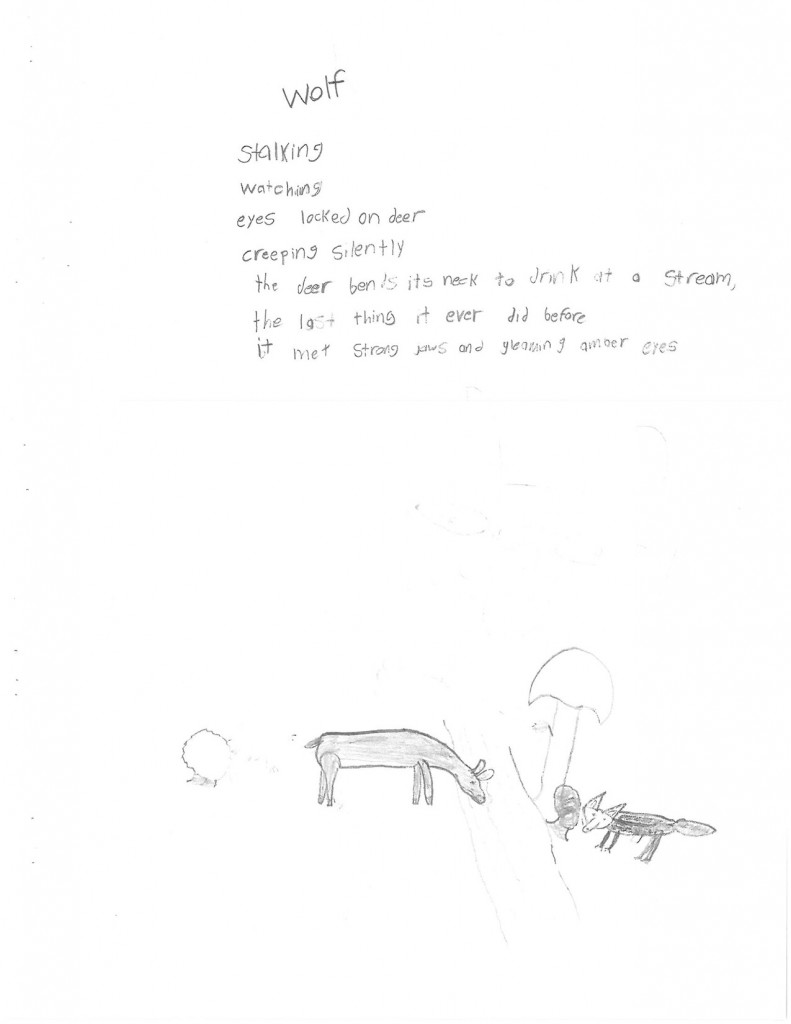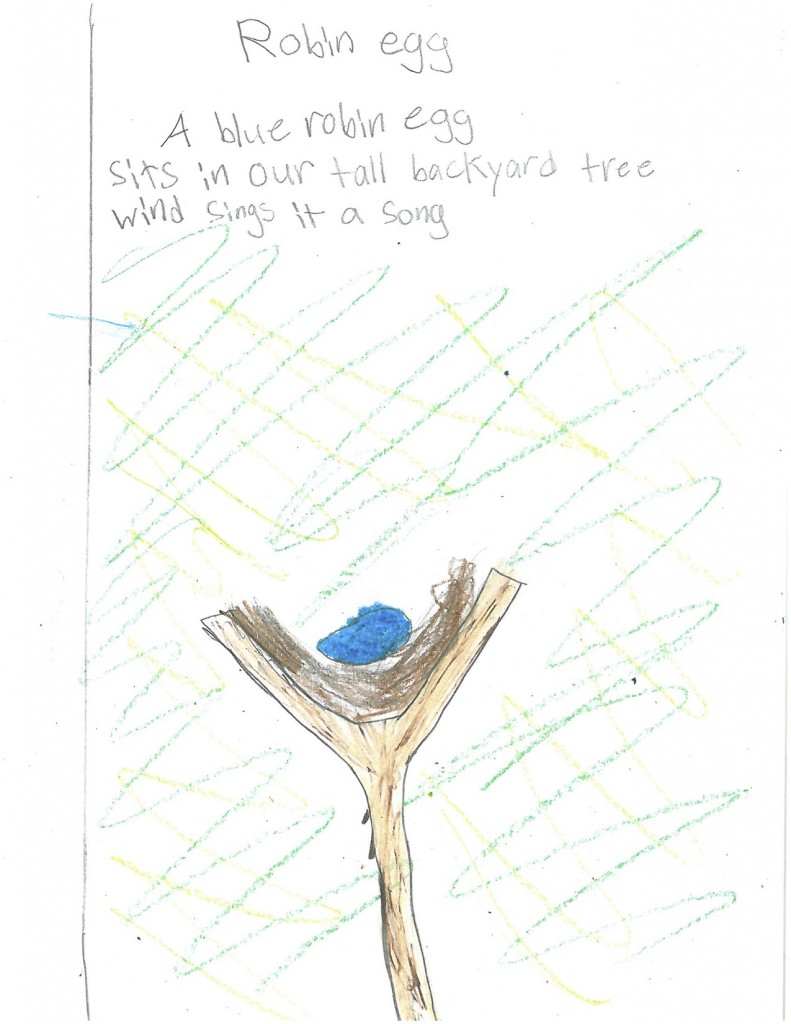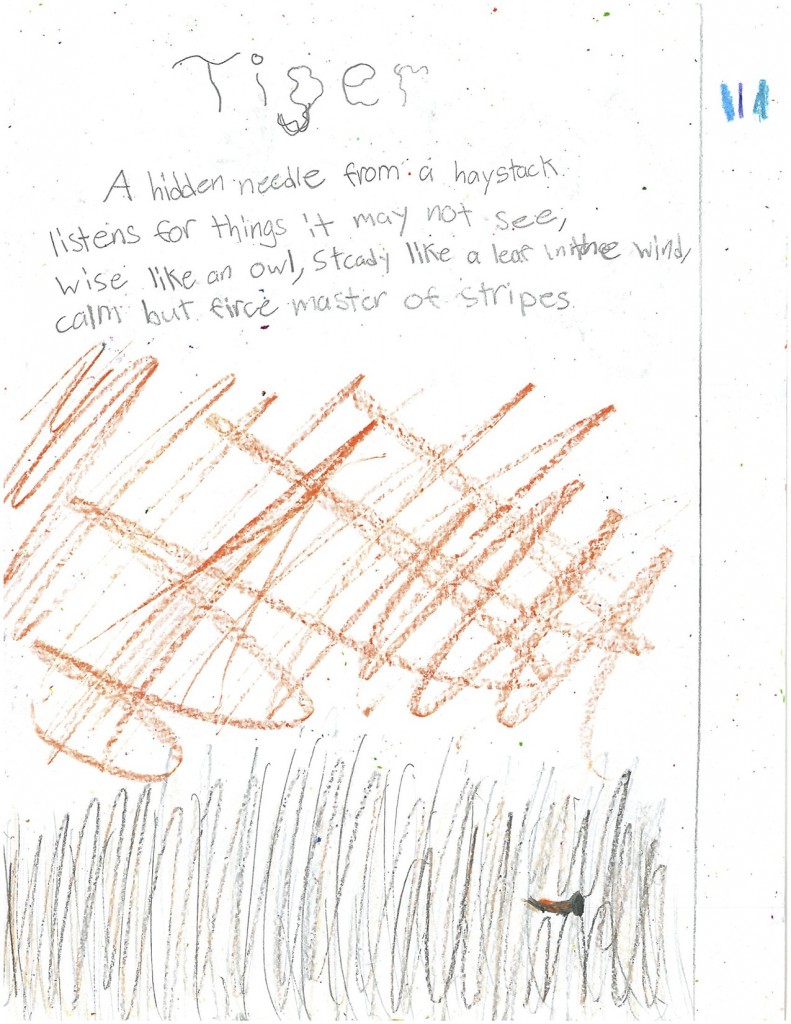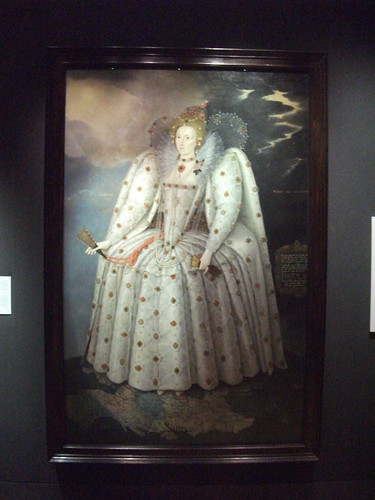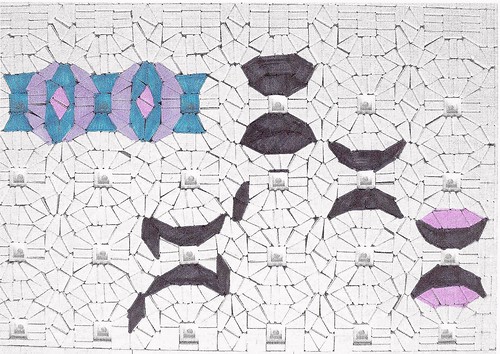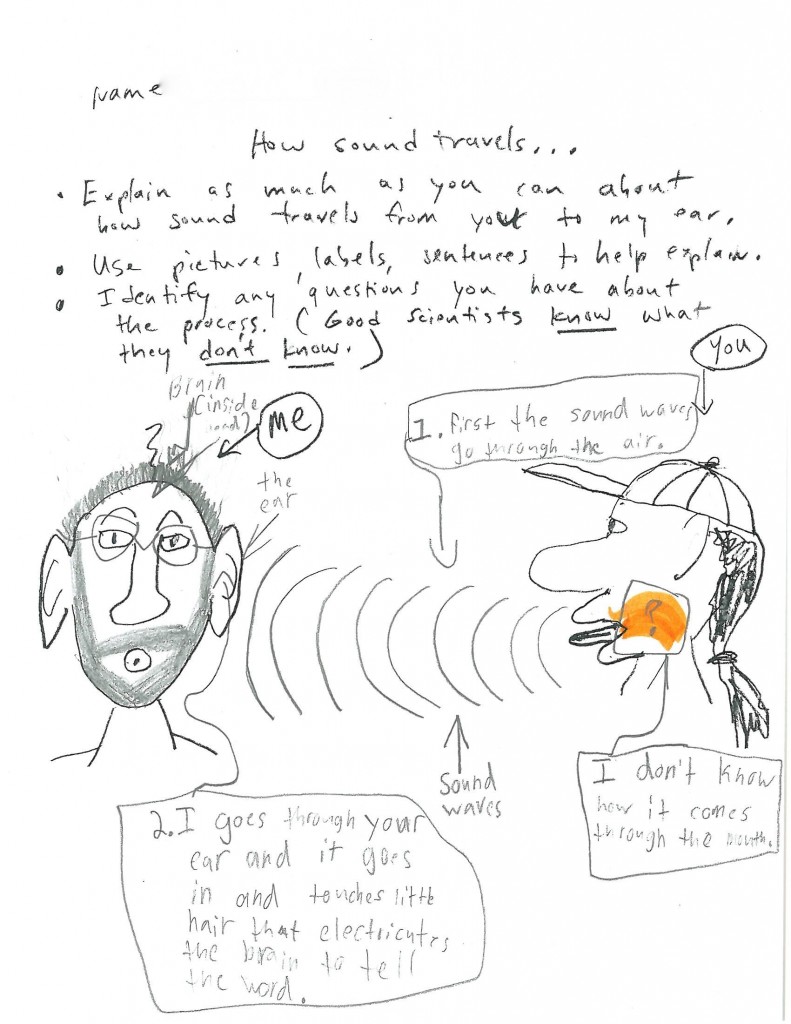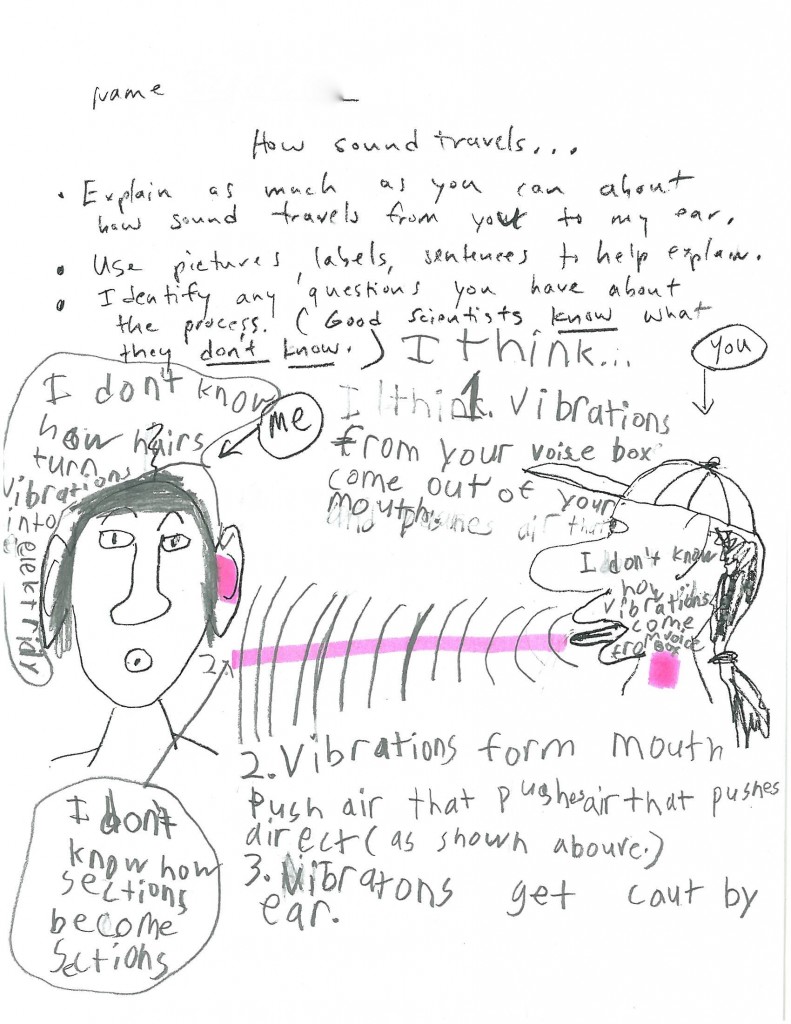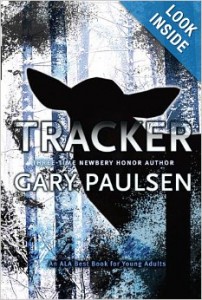 A small group of guys and I have been reading Gary Paulsen’s book, Tracker, together.
A small group of guys and I have been reading Gary Paulsen’s book, Tracker, together.
Together? Well, maybe sometimes. Some of these particular boys orbit through group work like celestial objects through a solar system. Their hearts and attention appear to be tethered to some complex system of invisible forces beyond my ken. Now here, now somewhere else, the gravitational pull that orders their lives does not often include talk about ideas with others.
From experience, I know they don’t do well when I arrive with a specific skill for them to learn or practice; they tend to tune me (and other kids) out, wandering off in their thoughts, perhaps dutifully doing the task I’ve assigned, but sometimes not. Dutiful or not, under those circumstance the “learning” does not appear to go very deep inside.
I chose Tracker because I knew the boys might groove on the topic. Most of them are hunters and have been going hunting with families for several years. Also, they hadn’t been exposed to Gary Paulsen’s work and I hoped to connect them to the deep themes that Paulsen explores through his books.
I kept my main goals simple: Like the skimmer construction project we are completing in science class, I planned to give the boys some good materials to use and a problem to solve. Translated into “reading class”, that meant they’d need a good book, and I would ask them to think BIG about what Gary Paulsen might be trying to tell them through the book. In other words, we’d explore not just WHAT the book means, but WHY the book exists? Why the heck did Paulsen write this book anyway? What might he have wanted us to think or feel when we read it? I asked them to mark places that “seemed important” and we would talk about those together.
We read. We gathered. We lay in a circle on the carpet. Chairs don’t work for these guys. They like to roll and rock, feet and bodies moving. Their talk sometimes sounds like machine-gun fire — short pronouncements delivered in bursts — rather than the kind of searching exploration that I seek to create.
Yet, in this merry band of comets, one conversation this week set me back on my heels. And it caused me to think about what I know about learning and teaching, and to wonder about what school is, exactly?
* * * * *
We’d read nearly half the book. We knew of John’s grandfather’s cancer; and two boys brought the recurring stories of death to the carpet.
These boys argued that the theme was death, and they cited as evidence Clay’s cancer, the deaths of John’s father and mother, the neighbor, three deer, particularly a line: “I was close enough to see the life leave it’s eyes.” They could relate to that sight.
Something interesting happened next. I asked: “What about death do you think Paulsen wants us to think about? What do you think he’s thinking about? Why might he have written this book for us to read?”
The response back was: “I’m not really sure.” To which I said: “Then what does it feel like he’s trying to say, even if you can’t put your finger on it exactly? We can work with what your heart tells you.”
Guy1: It seems like something is draining out of John as his grandfather is dying, that he’s trying to keep it together.
Guys: (Others agreed that it seemed that something was changing, but there was some general dissatisfaction with the “draining out” idea, too.)
Teach: You mean like he’s losing energy? Or something else?
Guy2: No, he seems to be gaining energy from the beginning. Like, he’s doing his chores and that seems to help him. But I see what you mean about something draining out. There is something happening.
Teach: What could be draining out…what could this idea of death, or the near death of his grandfather be doing to him that makes you feel like he’s losing something?
Guy3: It seems like maybe that what is draining out is maybe John’s connection with his grandfather. He’s been really important to John…John doesn’t have a father or mother and there’s no one around for him except his grandparents. Now his grandfather is going to die and there’s nothing he can do about it. It’s like John and his grandfather are connected, but that connection is draining away. They used to do chores together. They used to hunt together. Now John does all of that stuff by himself.
Guys: [Others chime in with examples of how the relationship has changed, how John doesn’t get to do stuff with his grandfather anymore. There is general agreement that this “death” theme might be not “just” about death, but about John losing some kind of important connection, and when that’s gone things will change for him, something will be broken.]
Teach: (I thought it might be important to explore not just “broken connection” idea, but also the “nothing he can do about it” idea, too.) So, what I hear you saying is that one thing this story might be about is the question: how do you deal with losing connection with important people or things, especially, like many losses, this loss is out of our control…Could that mean anything in our lives, even if we don’t have a grandfather dying…?
And so the conversation went. Worries welled up. Worries about family, worries about divorces, about many, many things that are out of our control. Yet we still have to deal with them, these things that boys don’t talk much about, especially in school. Which eventually brought us back to the book.
Teach: So…maybe Gary Paulsen wrote this book so he could help people like us learn how to live a good life, a meaningful life even when bad things happen, bad things that are out of our control…?
I told you once before that Paulsen ran away from home when he was young ’cause his family life was so bad. Things were so out of his control that he couldn’t take it anymore. How do you live like that? How do you find something good and important in all of that stuff?
Guy3: Maybe he wrote the book to help us figure that out?
Guy2: Maybe he wrote the book to figure out for himself…?
Teach: So, as we read more, maybe we can look for his answer…How do you live when things are out of your control? What do you do? How do you act? What do you hope for? What do you accept?
Which makes me think…Do you remember that odd bit that he wrote about the Japanese poets that his grandfather loved? The ones who wrote haiku? Do you remember that there was a line of Clay’s that struck us: “How did they find beauty in the midst of such ugliness?” Could it be that’s something this book wants to teach us? Maybe there’s some wisdom in the book that’s important for us?
* * * *
So, what to make of this one moment within a larger moment in the lives of some boys who aren’t sure of their place in school? I’m not sure.
I know that this particular book, coupled with these particular boys’ experiences, hit a nerve. I felt it. I could tell that they felt it, too. This description of John Borne’s life — a life of loss in a world out of his control — is also a struggle to find something to hang on to. This description caused them to connect pretty deeply with their own lives, a connection that allowed them to settle their comet-selves down on a carpet under a bank of fluorescent lights contained by four walls long enough to consider the possibility that some made-up character from the mind of someone they don’t even know might have something profound to say to them. Something shifted inside. Permanently? Assuredly not. Shifts show the temporary nature of things, not their permanence. But inertia is inertia and what is in motion has a greater chance to stay in motion…Who knows…?
I also know that it matters that I’m not a computer, and that the kids aren’t reading for AR points. I know them and what they struggle with. Our conversation naturally deflects toward those centers of gravity.
And, so…what’s this school-thing all about anyway? There are no standards that mention the seismology of the soul. There’s no way I could write that goal on the whiteboard: “A student will…what, exactly?” But without the gravitational pull of something meaningful, how do comet-souls find a force strong enough to claim a part of their mass? And without that pull — without the Japanese haiku poets that John Borne’s grandfather reveres, without the Gary Paulsens (or the librarian who gave him some books when he was a fourteen year-old) — how does one find beauty enough, gravity enough to capture a heart?
Finally, I write about this experience not because it is so uncommon, but because every teacher has had these experiences where lives are touched, including our own. We talk about this amongst ourselves. And yet the official version of school isn’t really about this kind of thing. Is it?


